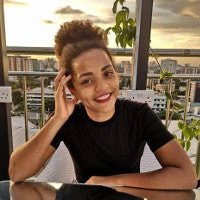 Ardhi University and University of Johannesburg students visit public spaces in Zanzibar and Dar es Salaam to propose ways they can be upgraded.
Ardhi University and University of Johannesburg students visit public spaces in Zanzibar and Dar es Salaam to propose ways they can be upgraded.
The effects of continuous and seemingly limitless expansion of urban areas are taking a toll on many, if not most, cities of Sub-Saharan Africa. This is particularly apparent in Tanzania’s megacity of the future, and commercial capital, Dar es Salaam. With an estimated 1,000 new arrivals every day, it is expected that the city will house a population of over 10 million by 2030. Such a rapid pace of urbanization introduces challenges for effective city management. Infrastructure and service delivery cannot keep up, mobility and transportation suffer, and a lack of available land and functioning housing markets drive the formation of informal settlements.
An equally concerning impact, however, is the threat that rapid urbanization and associated urban sprawl places on public spaces which are increasingly disappearing from the urban fabric. Not only is the quantity of public space in the cross-hairs of urbanization, but the competing pressures of governing rapidly growing cities negatively affects the quality of public space in terms of usefulness to the average citizen, and the ecological services they provide. This all too often leaves open areas as barren sand patches, without tree canopy or soft landscaping, lacking attractiveness and diverse functions that are essential for inclusive public use.
Some stark forthcoming figures support these worrisome trends1. Even in 2004, the city lagged behind other African cities in the provision of greenspace for its population. While other cities in the region provided on average 74m2 of open space per capita, Dar es Salaam provided 64m2. Further contributing to this, tree cover across the city fell by more than 10% each year between 2002 and 2008. Fast-forward to today and as little as 2% of Dar es Salaam is classified as public greenspace, with as little as 0.1% classified as park.
Recognizing the value of greenspace, cities such as Rotterdam, Cape Town, London, and New York, to name a few, have undertaken to quantify and promote the benefits of urban ecosystem services, and to be sure there are many. The greening of a city has been shown to not only improve air quality and reduce the heat island effect of urban areas, but also contribute to healthily communities, improve the appeal of business and residential areas, and reduce the potential impact of floods, all of which support improved socio-economic outcomes.
To help Tanzania’s commercial capital become a more liveable city, the World Bank through the Dar es Salaam Metropolitan Development Project, is supporting important investments in infrastructure, community upgrading, urban planning and capacity building. Among these initiatives is the Dar Open Spaces Upgrading, which aims to enhance a select number of open spaces for inclusive/ recreational use, while contributing to the strengthening of Dar es Salaam green infrastructure.
To enhance expertise and capacity among academics and professionals, 15 urban planning students from the Dar es Salaam based Ardhi University, and 14 architecture students from the University of Johannesburg and their respective lecturers, have been paired with urban planning counterparts in local government from three associated municipal councils, the national ministry responsible for urban development, and the World Bank as complementary support systems. Over the coming academic year, the student teams will be researching three open spaces in Ilala, Kinondoni and Temeke municipalities, and proposing ways in which these can be upgraded. The aim is not only to upgrade the identified open spaces in Dar es Salaam, but to use them as an opportunity to create awareness on the value of public spaces in the urban development discourse.
The first phase of this work involved the academic, government and World Bank teams observing, engaging and documenting the sites. Time was taken to interview community members in the surrounding areas to understand the historical significance, evolution and present uses of the sites. From here initial design concepts were developed that will be further elaborated as the students continue to refine their respective visions. This work will be further supported by an upcoming knowledge exchange to Johannesburg which will allow the Dar es Salaam team to advance their understanding of different approaches to managing public space, and to strengthen the collaborative process between South Africa and Tanzania.
With the city of Dar es Salaam growing as quickly as it is, the Government of Tanzania and the World Bank are planting the seed for continued engagement to grow a more balanced city with spaces for all.
For more information please contact: Eric Dickson (edickson@worldbank.org) and Franka van Marrewijk (f.vanmarrewijk@gmail.com).



Join the Conversation